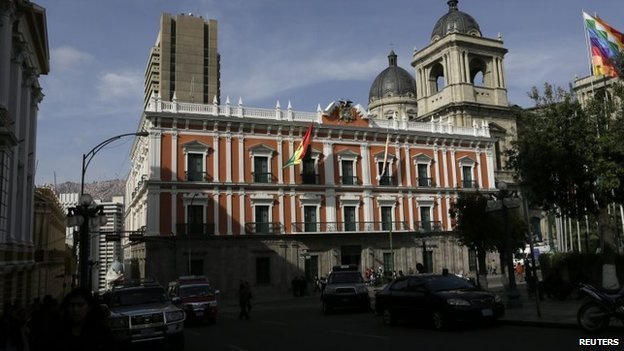Bolivia will start to build a new presidential palace for President Evo Morales.
Evo Morales, who signed the contract, said it was inspired by the architecture of the Tiahuanaco civilization of pre-Hispanic Bolivia.
The new palace will replace the current colonial building, in use since the 16th Century.
The new building will be decorated to remind Bolivians – a majority indigenous nation – of their heritage.
President Evo Morales, who has just started his third term in office, said the old building, known as “The Burnt Palace” because it was sacked and burnt during a revolt in 1875, was “full of European symbols and felt as small as a mousehole” .
He said the new palace, which would be called “The Great House of the People”, had been designed by Bolivian architects and would be decorated with indigenous motifs to pay homage to Bolivian traditional culture.

It will be built behind the current palace, which will be turned into a museum.
Evo Morales said the new building was “not a luxury”. He said the 29-floor building would also house cabinet meeting rooms and rooms for exclusive presidential use.
The plans for the new palace include a heliport, a centre for indigenous ceremonies and a 1,000-seat auditorium.
The new presidential palace is expected to cost about $36 million.
A government spokesman, Joan Ramon Quintana, said the current palace was where “former governments despoiled the Bolivian state of its wealth, its heritage and its memory”.
Evo Morales said that within the building, acts of betrayal, corruption, and murder had occurred – as well as heroic acts.
“The most terrible history was written there as well as the most noble,” he said.
The new palace is also expected to house a room to celebrate the history and social significance of the coca leaf.
President Evo Morales is a former coca growers’ union leader. Coca plays an important role in Andean societies. In addition to its medicinal value – as a stimulant, anaesthetic and appetite suppressant – it has a leading role in social interaction and religious ceremonies.
